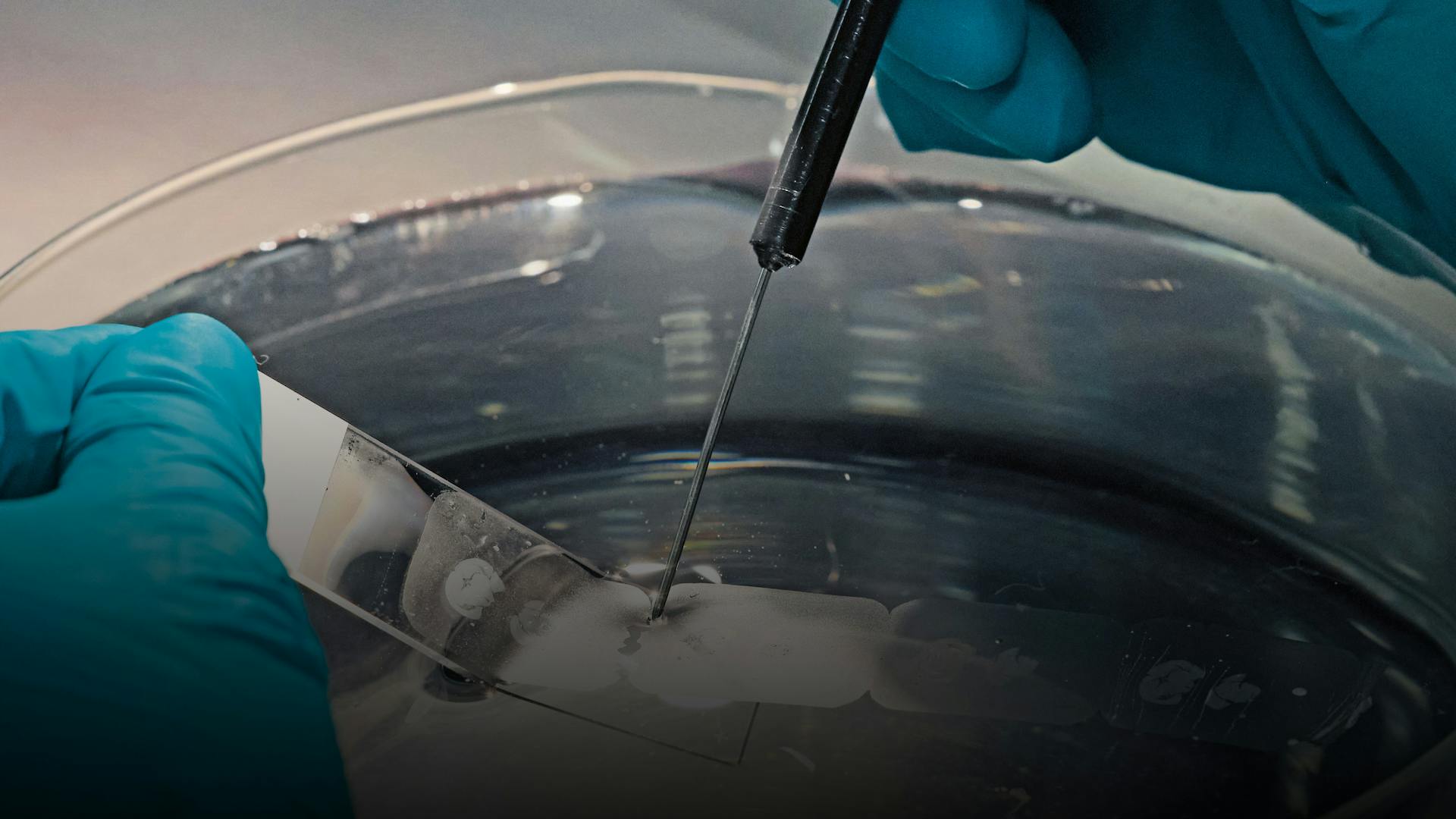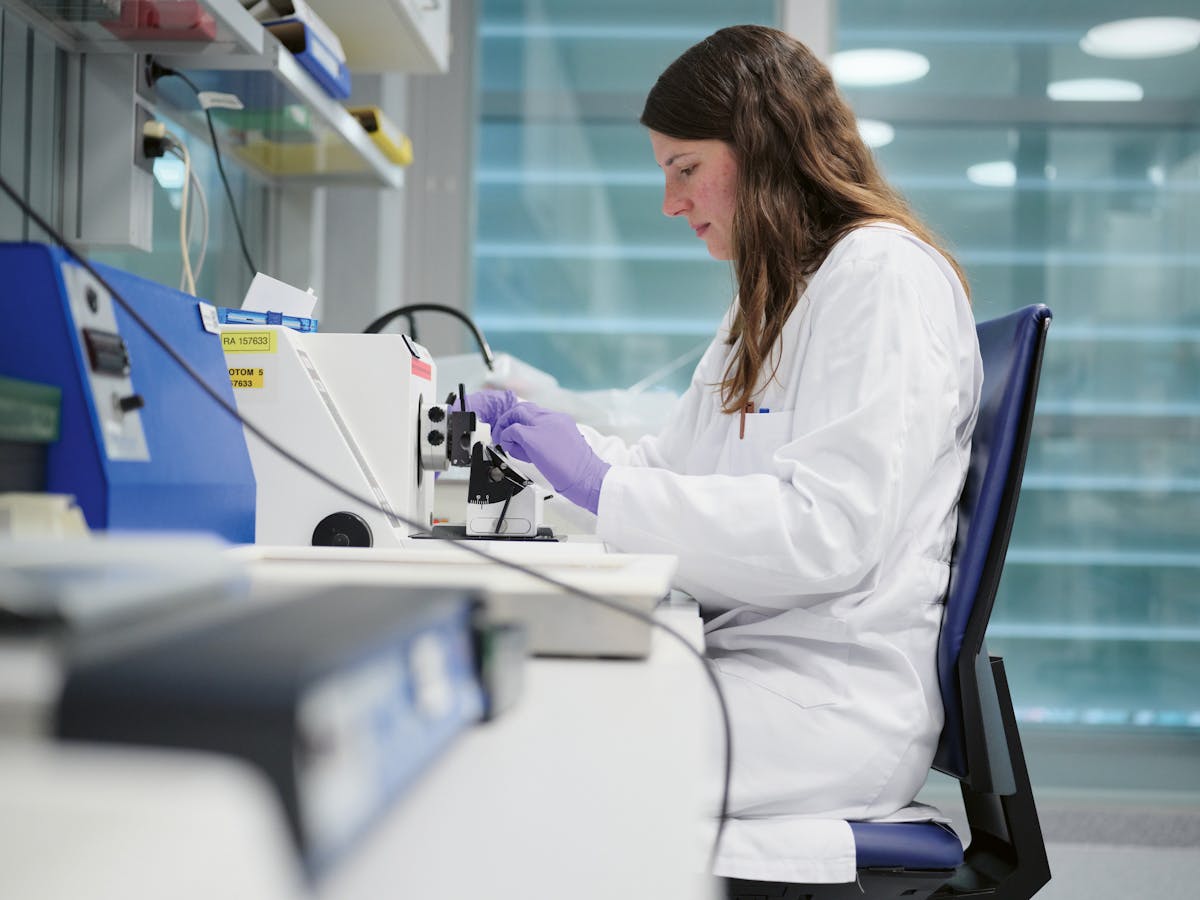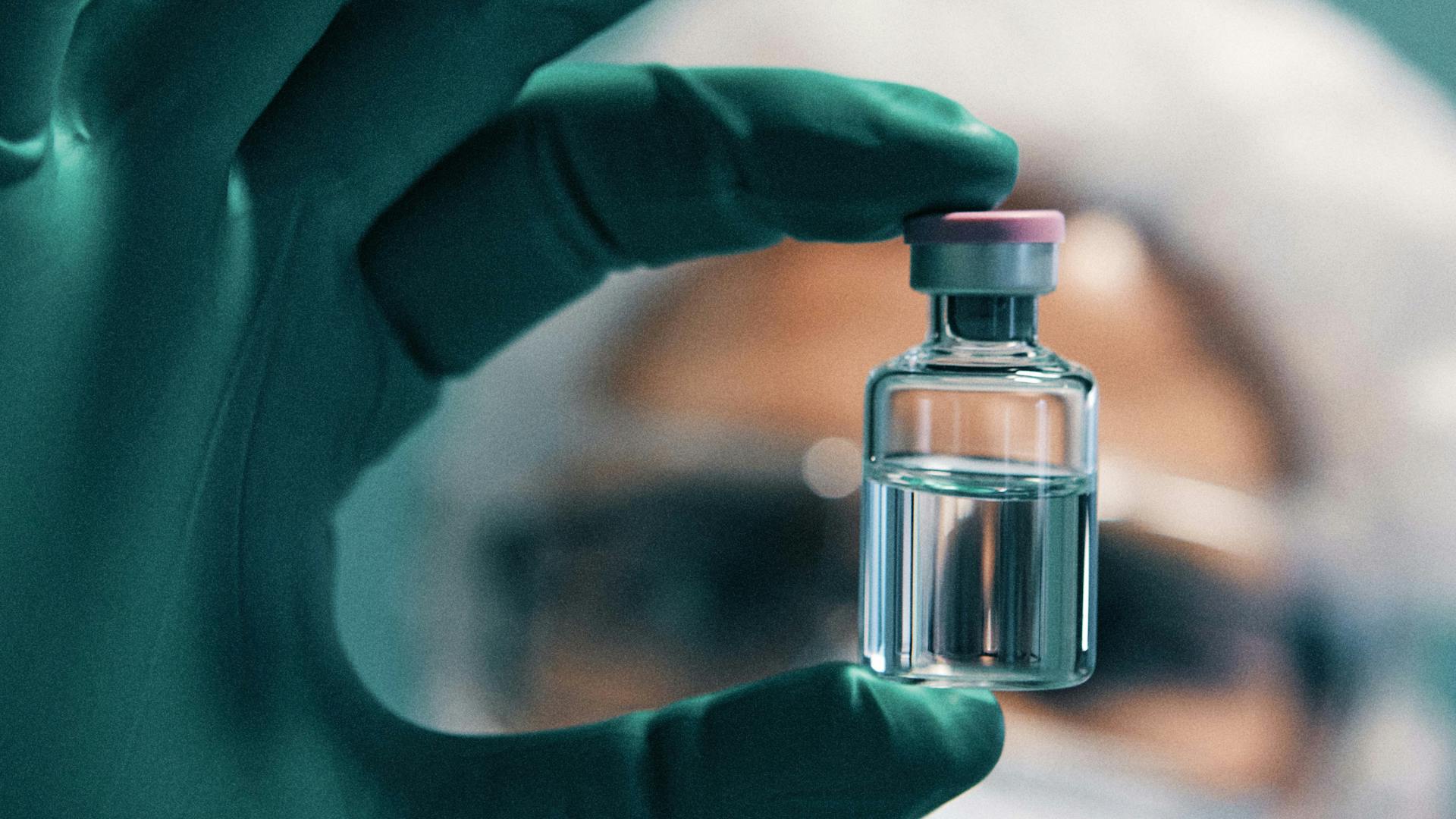
Step-by-step sample preparation in the pathology...
 Table of contents
Table of contents Going European
Going European Three million and beyond
Three million and beyond Right mindset
Right mindsetPublished on 07/10/2022
Back in 2016, when Novartis launched Genesis Labs as a sort of internal startup incubator, the idea was to give researchers space, time and money to single-mindedly follow an idea that could potentially pave the way for medical breakthroughs.
Part human resource exercise to provide talented scientists with a means to develop extra-curricular ideas, part effort to accelerate research dynamic in fringe fields that are outside of the core focus areas of Novartis, Genesis Labs attracted an ever-growing number of scientists over the past few years.
The program, which was co-initiated by Novartis researcher Ian Hunt, who runs Genesis Labs to this day, now includes engineers and technicians who work outside the lab and want to test fresh avenues in areas such as medical production, packaging or quality assurance, among many others.
All of them are craving for impact like Pierre Moulin, a former pathologist at the Novartis Institutes for BioMedical Research (NIBR), and Tobias Sing, a NIBR data scientist, who back in 2017 dreamed of tapping into the unrealized potential of the vast reserves of pathology data within the company.
Five years later, their idea has not only turned into a European flagship research project. Their success has also proven that giving researchers freedom to pursue bold and courageous ideas can make all the difference.
Thinking digital
Since the invention of the microscope, pathology has involved the careful microscopic examination of paper-thin slices of biological tissue encased in glass slides. This process is key to understanding what healthy cells look like, as well as identifying signs of disease, for example in clinical biopsies.
Pathologists spend years training to decipher these images and they spend their careers carefully annotating each one. And then, all of these images and findings are largely kept stored away – an immense and ever-increasing untapped resource.
Novartis alone collects over 300000 preclinical pathology slides each year. But these were typically used only within isolated development programs and there was no company-wide effort to bring everything under one roof.
But what if these could be combined into a centralized, shared tool for researchers across the company? And – even more ambitious – what if this could be combined with artificial intelligence, or AI, and machine learning, which have the potential to mine immense volumes of information that are beyond the ability of human minds to comprehensively analyze?
This was the thinking of Moulin and Sing when they were discussing their idea back in 2017. While pursuing such an idea was outside of Moulin and Sing’s typical business priorities, their idea was a perfect match for Genesis Labs, which supported their project, allowing the two to set up a team of researchers that brought lab, analysis and AI skills to the table.
In record time, the team formed by Moulin and Sing used the Novartis collection of pathology slides to develop AI training models to rapidly identify different tissue types. The outcomes were so convincing that the project was perpetuated even after their Genesis funding had ended with its 18-month timeframe.








